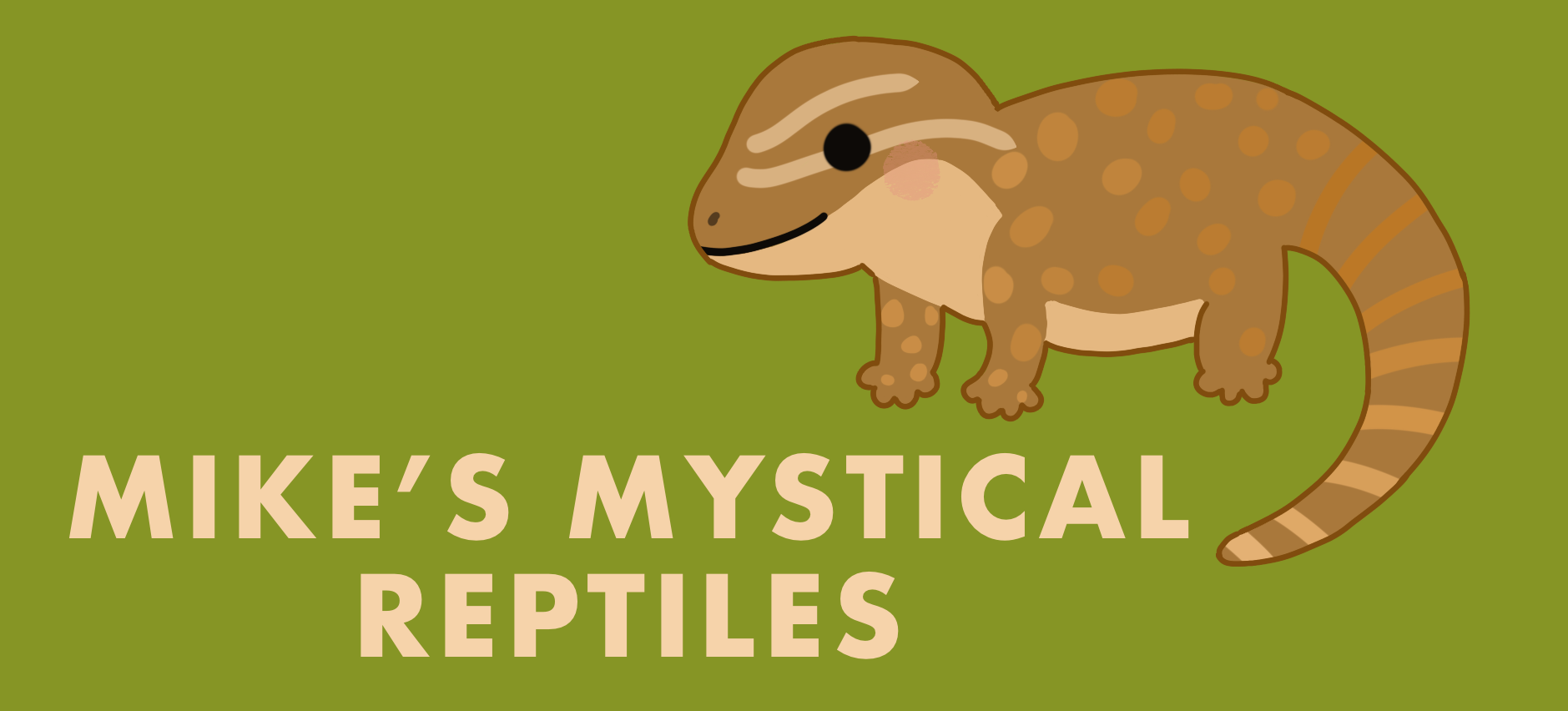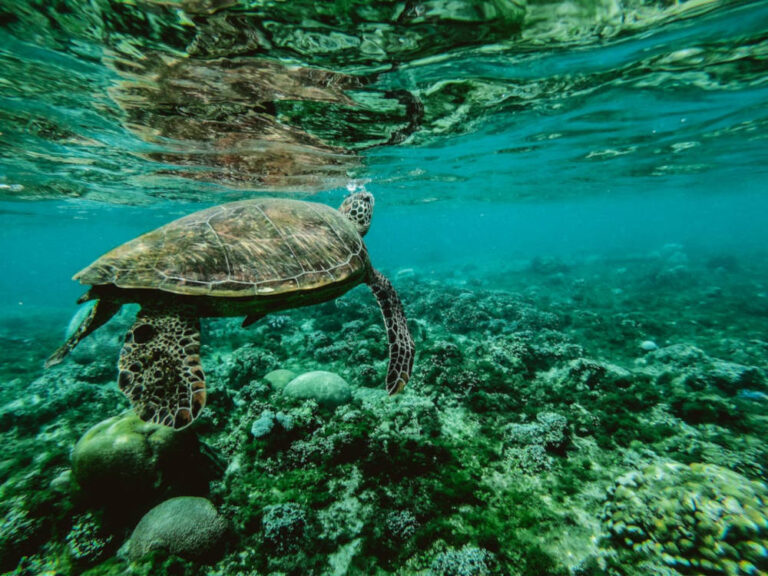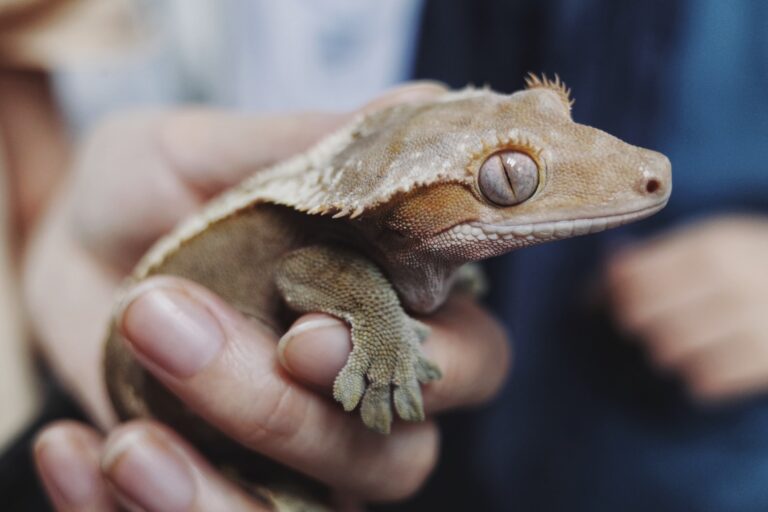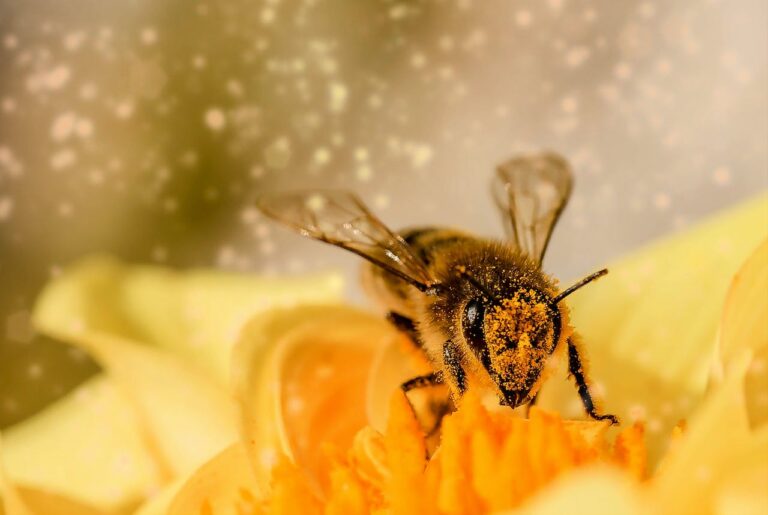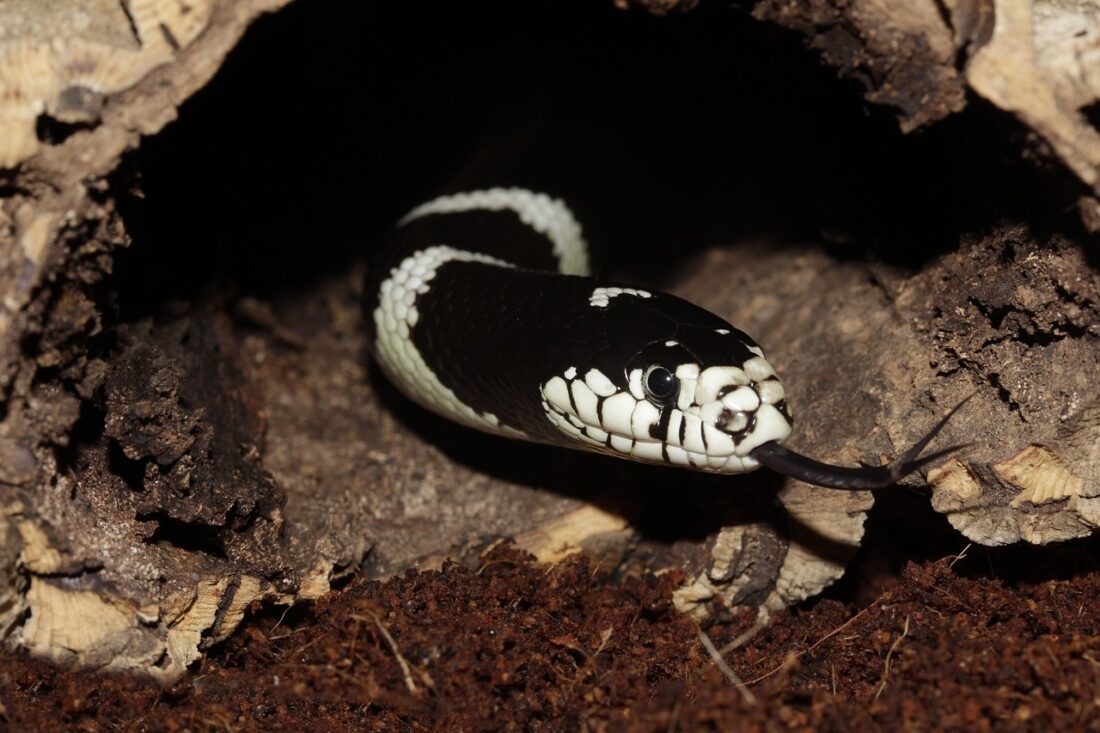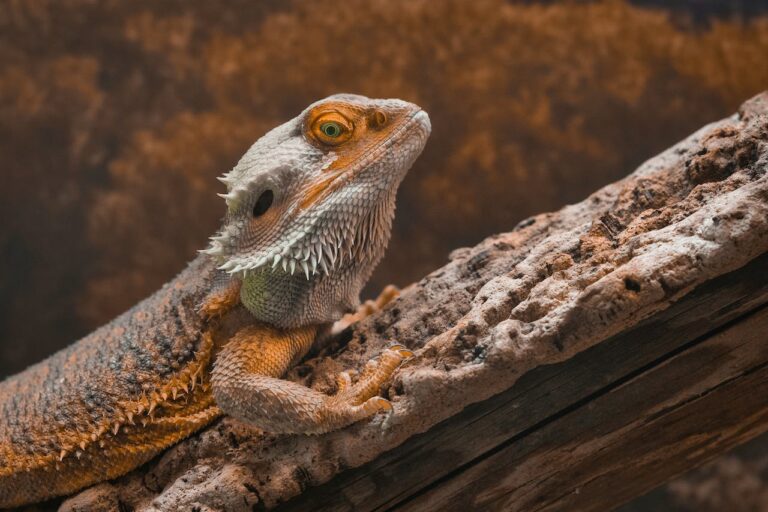Top 7 Best Pet Reptiles For Beginners (and 3 to Avoid)

Introduction
So you’re thinking about getting your first reptile huh? Great choice!!
In my opinion, there is no such thing as a “beginner” reptile. All reptiles have specific care requirements that must be followed with strict discipline to support the health and well-being of the animal. However, some reptiles are generally better suited for those with less experience.
This top 7 best pet reptiles for beginners list is simply my opinion on what reptiles are the best overall for beginner keepers. Never feel obligated to choose a “beginner” reptile as your first.
If there is a specific reptile you really want that isn’t considered a “beginner” species, I would recommend doing a TON of research and talking to professionals before finally adding the reptile to your home. (Note: the reptile must be within reason. i.e. Please do not get an excessively large snake or lizard as your first reptile)
Also, I want to say that beginner reptiles are not any less cool than the “advanced” ones out there. I think all reptiles are awesome, regardless of the variations in their care difficulty.
One of my favorite reptiles has been and still is the bearded dragon. I love everything about this awesome lizard!
Before we jump in, I do want to provide a bit of context as to how exactly I’m choosing these “beginner” reptiles. I may make some exceptions here and there for some of the criteria.
Criteria:
- Affordability: Considering upfront costs and ongoing expenses
- Handleability: Reptile must tolerate moderate handling (with exceptions)
- Overall Care Requirements: Dietary, living needs
- Availability: Ensuring the species is readily available
- Hardiness: Species is tolerant to beginner mistakes
- Size: Should be moderately sized
- Fun: They gotta be FuN 🙂
Now, with that out of the way, let’s get on with the list! (this will not be an in-depth care guide for each reptile; please do your extensive research before bringing in any new reptile!)
Stick around to the end, as I will be discussing 3 reptile species that absolutely should not be your first pet reptile!
1. Crested Gecko / Gargoyle Gecko
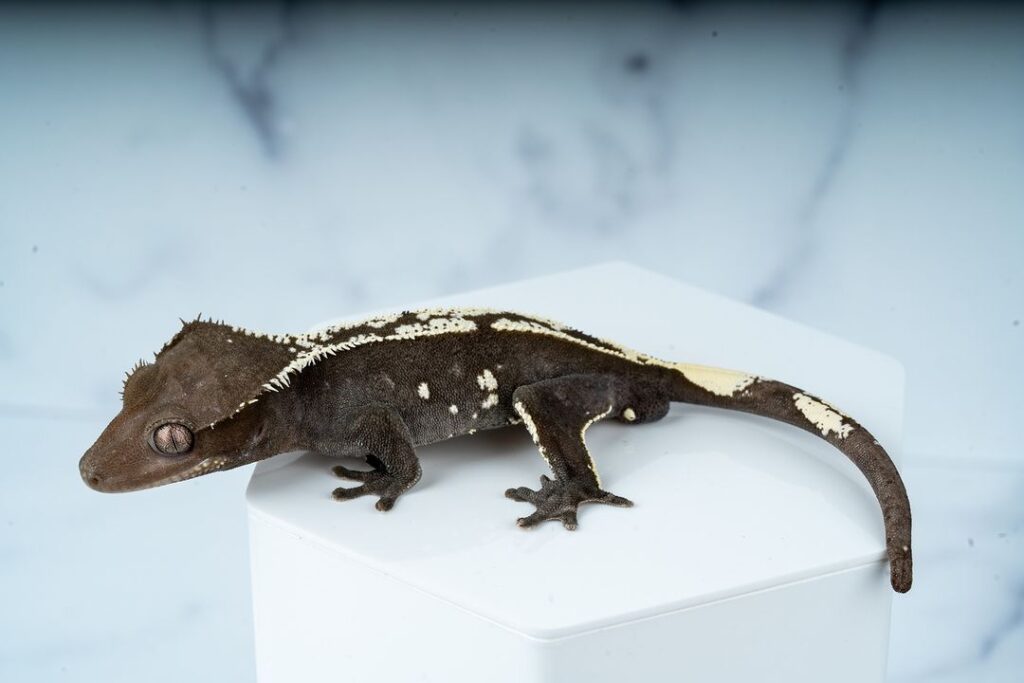
The crested gecko and gargoyle geckos are geckos that hail from the island of New Caledonia! I decided to group them because they are very similar in almost every aspect, from their size, diet, care, nutrition, and temperament.
I love New Caledonian geckos! You know, crested geckos were thought to be extinct until 1994 when a tropical storm hit a group of researchers, and they were found again.
Crested geckos and gargoyle geckos might well easily be the most beginner-friendly reptile there is in the world.
They are very affordable and readily available, being sold in almost every pet store and all reptile expos. You can purchase one for about $40 if you want to go super cheap.
Gargoyles might be a bit more expensive and harder to find than crested geckos, but they are still very popular geckos and are constantly increasing in popularity.
What I love most about these geckos is that their care is extremely simple.
All you will need is around a 15-gallon enclosure for one adult gecko, crested gecko diet powder (I use Pangea gecko diet), feeding ledge/dishes, spray bottle for humidity, climbing branches, optional feeder insects, and some form of heating if the ambient temperature is not around 72 degrees Fahrenheit.
This is of course just the bare minimum and I encourage you to consider making the enclosure bioactive, with the addition of live plants and clean-up crews.
Something great about most New Caledonia geckos is that you don’t have to feed them insects! The powder diet is all you need!
These geckos also tolerate handling pretty well. They are more delicate than other reptiles because of their smooth skin and small size, but as long as you are careful while handling them, they will be fine.
One thing to mention is that they can drop their tails if they feel stressed or threatened (or honestly for any other reason).
Beginner reptile keepers may be shocked or scared when this happens but this is normal and will not affect their life in any way.
While gargoyle geckos will regrow their tail (it will not look the same), crested geckos do not regrow their tail.
2. Bearded Dragon
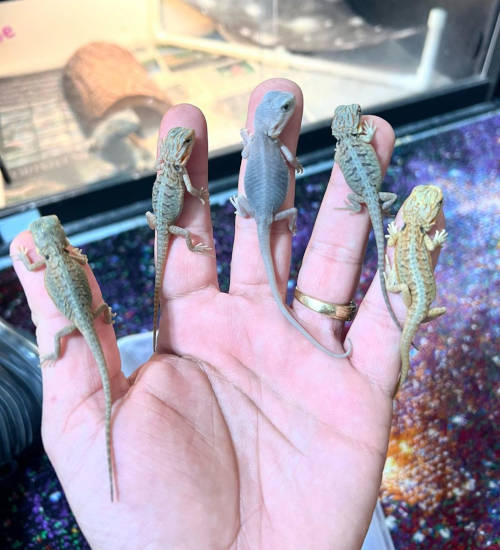
Bearded dragons might very well be my favorite reptile to date! What’s there not to love about them? They’re super handleable, love cuddling in your arms (in my experience), and act somewhat dog-like.
They are larger than your average pet lizard which makes them more robust and able to tolerate more frequent handling.
They also pack an active and chill lizard into one package. What does that mean? Well, if they’ve been basking under their heat bulb for a while, you’ll get to interact with a much more active lizard, who is always exploring.
However, if they are not warmed up, you’ll get a more chill dragon that loves sitting on your shoulder for hours on end (doing this once in a while is okay, but not so frequently as they need heat to metabolize food).
If you want to learn more about fun activities to do with your reptile, check out my article here, where I talk about 11 activities you can do for and with your reptile!
Some may argue that bearded dragons may not be beginner lizards because of their stricter dietary requirements.
While I do agree that their diet is more specialized than say a crested gecko or ball python, I believe it is a tiny investment with a great return. All this means is being able to supply fresh greens and more feeder insects on a regular basis.
Their enclosure is also on the larger size, with one adult needing a 4′ x 2′ x 2′ enclosure (or 120 gallons).
This enclosure will be just one large investment upfront but can house your bearded dragon for their whole life (around 15 years).
Concerned about getting your hands on your bearded dragon? Fear not, they are super affordable and sold everywhere (only purchase from reputable breeders, and please do not buy yours from a large commercial pet shop like Petco or PetSmart).
3. Spotted Python
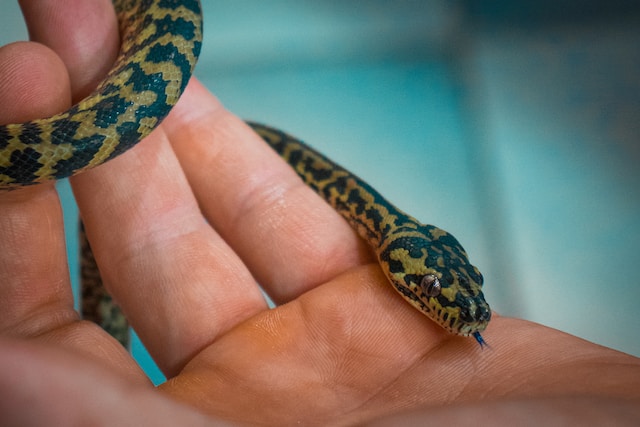
When you’re just getting into reptiles and considering a snake, you probably want to get one that is not too large.
I would say a snake of length between 3 and 5 feet is a good entry-level snake. They are not large enough to harm you, but not small enough that you could potentially harm them while handling them.
What I like about the spotted python is that they are a bit more uncommon than the standard ball python that “everyone” gets. If you’re looking for something more unique but still a great reptile, this is the snake for you.
They also feed more easily than some stubborn snakes including the ball python. If you are new to snake keeping, it might alarm you if your snake does not eat for several weeks on end.
With a spotted python, you will thankfully not encounter this problem. Adult spotted pythons should be fed one adult mouse every week.
They average around 3 to 4 feet as adults and are visually stunning semi-arboreal snakes. This makes them great display animals that are also very handleable.
They are also pretty hardy and will tolerate minor mistakes from beginner reptile keepers.
I highly recommend you look into this snake as your first pet reptile!
4. Pink Tongue Skink
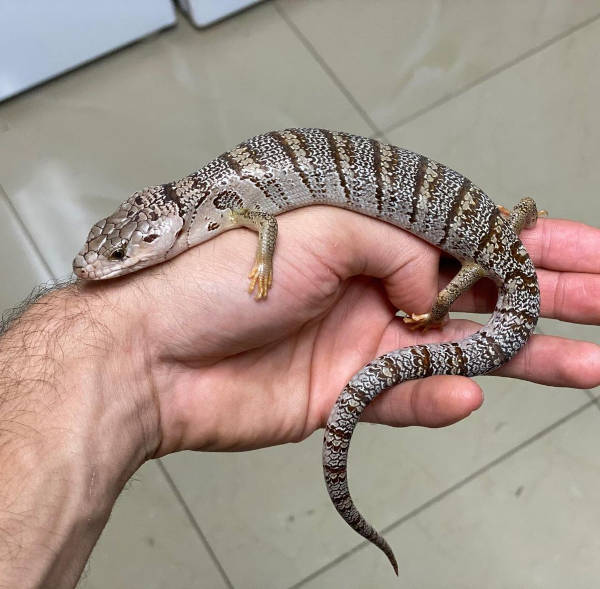
Another less common reptile is the pink tongue skink (PTS)! These are highly underrated lizards that deserve so much more attention.
They are basically a smaller version of the blue tongue skink (BTS) that is more arboreal and less food-motivated. As such, they also require a smaller enclosure size, hence more beginner-friendly.
The main reason why I chose to pick the pink tongue skink in this list over the blue tongue is because their overall expense and maintenance are easier. If you have the space and budget to get a BTS, feel free to get one! They are also awesome pets!
While a blue tongue skink may require 8 square feet of space, a pink tongue skink can happily live in a 36”L x 18”W x 24”H. I would not recommend housing more than one PTS per enclosure as they may get aggressive with others in the tank.
The only downside about the PTS is their price and availability. Expect to pay around $300 for the skink itself. However, besides that, everything about them is amazing.
Pink tongue skinks are incredibly docile and tolerate handling exceptionally well. Because they are semi-arboreal, they tend to hold onto you better than their larger blue-tongue skink cousins (which are more like holding a soft, long potato).
They also have a very diverse diet that suits many reptile keepers. They will feed on insects, fruits, veggies, earthworms, snails, vegetation, dog food, cat food, ground turkey, and more!
This means you may be able to get away with not feeding your skink live feeder insects, making their care so much easier (I still recommend supplementing live insects occasionally for health benefits).
If you want to get away with feeding even less feeder insects, there is a product called Repashy Bluey Buffet which is essentially insect powder with other veggies and supplements.
Another pro of this reptile is that they all come captive-bred so you don’t have to worry about getting any wild-caught specimens.
I want to emphasize one more time how tame, docile, and handleable they are. Once you get this reptile, you may be unable to stop handling it because of how fun it is to do so (make sure to give them sufficient rest in between handlings).
5. Leopard Gecko / African Fat-Tailed Gecko

If you want a very handleable and very low-maintenance reptile, look no further. The leopard gecko or African fat-tailed gecko (AFTG) is the right pet for you!
I grouped the leopard gecko and the African fat-tailed gecko because they are very similar in all care requirements.
Adult leopard geckos and AFTGs will need to be fed a diverse diet of feeder insects every 2-3 days.
Something great about these geckos is that they don’t eat a lot of insect feeders, but you will have to have a steady supply of the insects on hand all the time. Also, supplement with calcium and vitamin D3 to prevent metabolic bone disease.
While most adult leopard geckos and AFTGs are docile for the most part, several individuals may be more grumpy if they haven’t been socialized from a young age. Also, AFTGs are known to be more shy compared to leopard geckos and may take a bit more work to get them used to handling.
Leopard geckos and AFTGs can drop their tail if they feel threatened or as a defense mechanism, but they are unlikely since their tail holds many fats and nutrients to keep them alive during times when less food is available (They do regrow their tail; although it may not look the nicest)
Something to consider is that they are relatively small lizards and while tolerate handling pretty well, can be more easily injured compared to larger, more robust lizards like bearded dragons.
They don’t require a lot of humidity (~30-40%) but may benefit from a humid hide during times of shedding.
Ensure that they have some sort of heating source, and whether you provide UVB or not is up to you (although I recommend it for optimal health).
While leopard geckos are very readily available, you may have to search a little harder for AFTGs. Leopard geckos come in many different morphs and colors so there will always be one gecko just right for you!
6. White’s Tree Frog
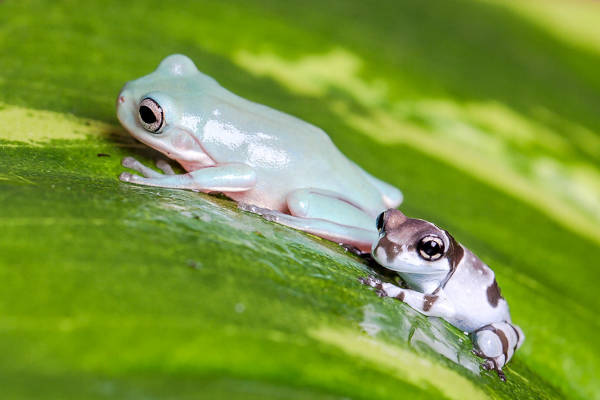
Yes, I know. The white’s tree frog is an amphibian, not a reptile. Sorry for ruining the list.
Anyway though, the white’s tree frog is probably as good as you’re going to get as far as a beginner amphibian species that tolerates handling pretty well.
However, I want to make clear that amphibians should not be handled that often, as their skin easily absorbs whatever it touches, which could include dangerous chemicals on our hands, even after washing them (make sure your hands are as pure as they can be before handling any amphibian).
These frogs are large, robust, and hardy. They should be fed a diet of diverse feeder insects including dubia roaches, crickets, superworms, and more.
Ensure that their enclosure is large enough (around 20 gallons tall for one frog), has high humidity levels, and good ventilation. We want to create good airflow to prevent mold but also achieve high levels of humidity.
To help increase humidity, I would use a substrate that retains humidity, such as coco fiber (Eco Earth) and sphagnum moss. A bioactive tank works very well with this species.
As with any amphibian, the water quality is EXTREMELY important. Make sure you use dechlorinated, purified water whether it be in their water dishes or spraying down their enclosure. To be on the safe side, do not use distilled water.
If you like frogs or any amphibian, the white’s tree frog is a great place to get started!
7. Corn Snake
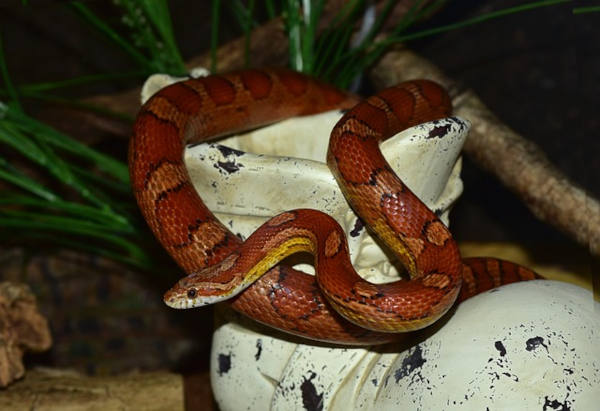
One more snake for this list!
The corn snake is another readily available snake that makes for a great beginner reptile pet!
They are very handleable and generally more active than ball pythons, which are usually more chill and laid back. One thing to consider is that corn snake babies may be nippy and flighty at times, but this tends to fade with time.
Corn snakes have a great food drive which is great if you are concerned that your snake will not eat regularly (which is a very common concern).
They enjoy eating so much that you may have to monitor their food intake more carefully, as overfeeding could lead to an obese snake.
Note: You should leave your corn snake alone for a couple of days after feeding to minimize the chances of it regurgitating the food due to indigestion.
Corn snakes are smaller-bodied than other snakes like ball pythons, and thus a little more fragile. Nevertheless, these 5 feet long snakes are still more than robust enough to handle.
Heating is simple as all you will need is some form of heating to heat one side of the enclosure to around 80-85 degrees Fahrenheit, with the cool side remaining around 75 degrees.
Even better yet, these snakes come in a huge variety of morphs and colors, making a personalized corn snake pet very possible! As these morphs have been around for many years, the prices of these snakes have also gone down dramatically. The price for a standard morph could go as low as $40 or even lower!
3 Species You Must Avoid as a Beginner
1. Red Eared Slider
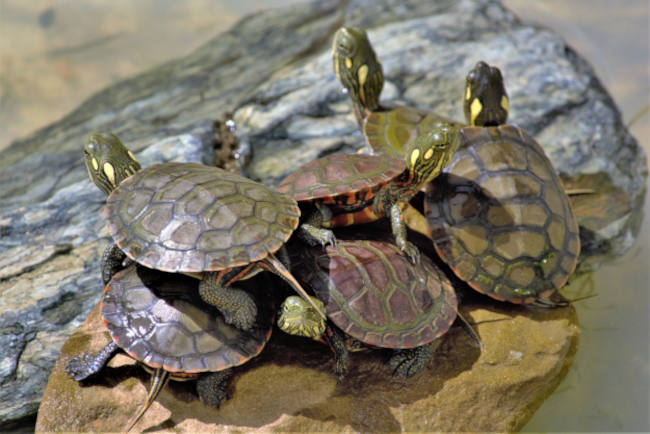
Please. Please don’t get a red-eared slider unless you know with absolute certainty that you can take care of it properly.
Many people see the tiny 1-2 inch turtles for sale in pet shops and fall in love with them immediately.
In addition, the pet shop’s owners may claim that the turtles stay that small for the rest of their lives. This then leads inexperienced people to make impulse purchases faster than you can say “turtle”.
When the once tiny, cute turtle grows into a 10 to 13-inch turtle, most people honestly do not have the space or equipment to properly care for them anymore.
Instead of purchasing a 100-150 gallon tank for the turtle, they release them into the wild, contributing to the population of invasive species.
Okay, my apologies, I’m done with my “rant”. But in all seriousness, please do not buy a red-eared slider if you can not properly take care of it.
Red-eared sliders require very large aquariums with a strong filtration system, a basking spot, a place to walk above the water, UVB lighting, and more.
If you desire to get a turtle as a pet, I recommend getting a musk turtle, as they only get to sizes between 3 and 4 inches. More importantly, however, a musk turtle will happily live in a 40-gallon tank for its whole life.
2. Any Venomous Snakes (Hots)
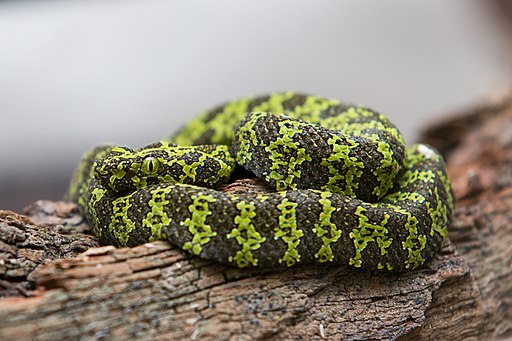
If you are seeking a reptile as a first pet, I would steer away from any venomous snakes. Even if you are decently experienced, I would tread very carefully around the idea of bringing a venomous snake into your household.
The risks of owning a venomous snake may be low if you are a very experienced keeper. However, the risks are still there. This risk is not to be taken lightly. One wrong mistake could very well end your life.
Yes, there are people like Tyler Nolan or Chandler Kamenesh from Chandler’s Wildlife who regularly handle and own various venomous snakes. Tyler and Chandler are venomous snake experts, not you (assuming you’re the average person reading this post)
Note: Even Tyler and Chandler have had near-death experiences after receiving accidental bites from venomous snakes.
There are so many other great options if you want a beautiful-looking snake. Snakes like the Brazilian rainbow boa, garter snake, or mandarin rat snake are extremely colorful and arguably even cooler than most venomous snakes.
3. Any Excessively Large Lizard or Snake
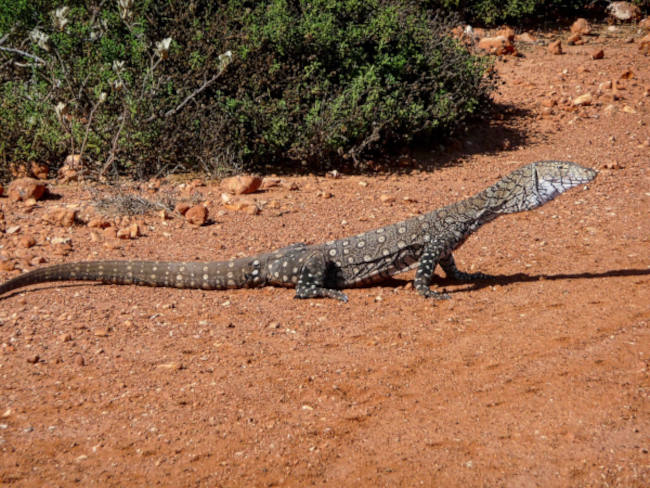
Many large lizards (mainly monitor lizards) and snakes can make great pets if the keeper is experienced and familiar with reptile body language.
However, large lizards and snakes can be dangerous if they are not cared for properly.
I would say that snakes of lengths 10 feet or greater and lizards 4 feet or greater should only be kept if you are a much more experienced reptile keeper. These reptiles are definitely not a “first reptile” kind of pet.
These reptiles possess a significant amount of strength and could make regular interactions or handling very dangerous.
Additionally, they require enclosure sizes that are much much larger, with some even requiring dedicated rooms to live in.
Larger reptiles almost always have more specialized care including specific dietary, environmental, and behavioral needs that require a higher level of knowledge and experience to address.
If you are dead set on getting a monitor as your first reptile, I recommend looking into Ackie monitors or any dwarf species of monitor. It will still be a heck of a challenge, but any mistakes will not cost you any irreparable bodily damage.
Conclusion
Here’s a quick recap of what we learned:
Great Beginner Species:
- Crested Gecko/Gargoyle gecko:
- Can be fed exclusively a powdered diet
- Super simple care requirements
- Reasonably priced and widely available
- Bearded Dragon:
- Super handleable, affectionate, and chill
- Larger size makes them more robust
- A slightly more specialized diet
- Spotted Python:
- Great size for handling
- More uncommon and visually stunning
- Good feeding response
- Pink-Tongue Skink:
- Vary diverse diet; many feeding options
- Requires less space compared to a blue tongue skink
- Tame, docile, and handleable, offering an engaging interaction
- Leopard Gecko / African Fat-Tailed Gecko:
- Requires feeder insects every 2-3 days
- Generally docile, though individuals may vary in temperament
- Come in various morphs and colors, catering to personal preferences
- Very very cute! (my opinion, but I’m sure you would agree)
- White’s Tree Frog:
- Decently large, robust, and hardy amphibian
- Tolerates handling well for an amphibian but should not be handled excessively
- Requires a well-ventilated enclosure with controlled humidity
- Sensitive to water quality like all amphibians
- Corn Snake:
- Very handleable and generally more active than most snake species
- Enjoys eating, making regular feeding less of a concern
- Very very affordable and comes in a huge range of morphs and colors
Species to Avoid as a Beginner:
- Red Eared Slider:
- Gets much larger than most people think
- Requires HUGE enclosure
- Most people end up releasing them into the wild when they get too big to care for
- Difficult care requirements
- Any Venomous Snakes:
- Too much risk involved
- One bite could end your life
- Only for the most expert reptile keepers (and still, maybe not)
- Many other colorful nonvenomous snakes as alternatives
- Any Excessively Large Lizard or Snake:
- Large reptiles possess huge amounts of strength that can prove to be dangerous
- Have more specialized care requirements
- Include lizards 4 ft or more and snakes 10 ft or more
Well, that’s a wrap! I hope you learned more about which reptile species could make great pets for you! There are countless other great reptiles for beginners. This is just my opinion on the best pet reptiles for beginners (from my experience).
Are you thinking of getting a new reptile or a first reptile? Let me know in the comments section which one it is! Catch you on the flip side 🙂
